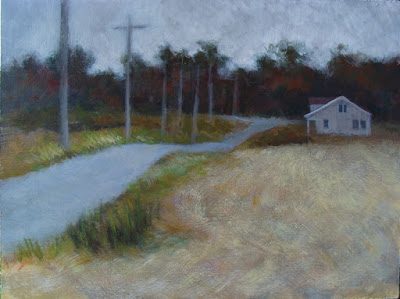"Color, A course in mastering the art of mixing colors", by Betty Edwards
Here we are getting the typical fall weather- a succession of strong storms moving in from the Pacific with lots, and lots of rain. Sometimes a steady light drizzle, sometimes a heavy downpour.
This is amuse-yourself-inside kind of weather.
I am reading a book on color theory by Betty Edwards, which expands on her experiences with painting. I am trying some of the color mixing exercises which included creating a circular gray scale for isolating and evaluating different value and intensity levels by laying it over an area of color and matching the relative values through the little punched holes in the wheel. This was more difficult to create than I expected- I adjusted the value segments several times, and still don't have an even distribution.
The color wheels were much easier to do, although I didn't have the suggested paint color to use on the green and the violet sections. I was familiar with lightening a color by adding white, but had not tried darkening down colors by adding black, having been cautioned that would deaden or flatten the color. I'd always just added another dark hue to the mix.
I discovered a whole new range of colors by adding a tiny amount of black to a pure color, or to a simple mix. The paint does not always react the way you expect, due to the chemistry.
I also discovered I am not paying attention to the difference between the lightness of a color vs the intensity of a color.
According to Betty, my brain might be getting in the way of seeing what is really there, a phenomenon she calls "color consistency", where you revert to your early training of coloring the sky and water blue, and the foliage green, and the sun yellow.
Sometimes a problem can be fixed by simply adjusting the value or intensity of a color to work better with the others around it.







